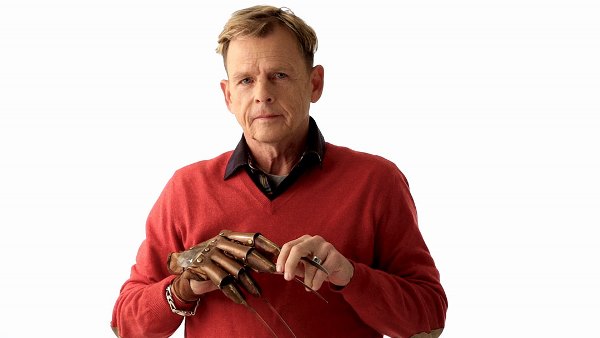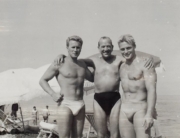
A Nightmare on Elm Street 2: Freddy’s Revenge has gone down in history as one of the gayest horror movies of all time. How exactly this came about has been enshrouded in mystery for 34 years (the film came out in 1985). While critics and fans have pontificated on its overtly queer themes, for years its filmmakers have played coy whether this was intentional or just incidental subtext.
The movie is considered by mainstream detractors to be one of the worst entries in the slasher series (partly because of homophobia, but mostly because it’s not a very good movie), and it had a profoundly negative effect on the lead actor, Mark Patton. When the documentary on the horror series, Never Sleep Again, was being made in 2010, the producers of that film had to hire private investigators to seek Patton out, and they found him living in Puerto Vallarta, having retired from acting and all things Hollywood for nearly 25 years.
Patton blames the film for ruining his career. NOES2 came out in the early years of the AIDS epidemic when Hollywood was undergoing a gay panic, and the most eye-opening section of Scream, Queen! My Nightmare on Elm Street is a montage of examples of homophobia in 1980s Hollywood movies (even in Pretty in Pink).
Gay actors in Hollywood had been living somewhat in the open around friends, neighbors, and coworkers, but if an actor was suspected of acting gay, he could be unemployable. Patton, who lived with his partner at the time, actor Timothy Patrick Murphy, was going to parties at Merv Griffin’s house and living the dream in the Hollywood Hills. Then Murphy contracted HIV and passed away from AIDS in 1988, and Patton has had a litany of health problems, including tuberculosis on top of having HIV.
Given the paranoia in Hollywood at the time when NOES2 came out, journalists immediately ran to their typewriters to sound the signal that the world had its first gay slasher film. The Village Voice was the first to break the story, and then more publications picked it up and ran with it. The target audience for these films, teenage straight boys, hated the sequel, while teenage gay boys related to it. Cult status notwithstanding, Patton believes the film branded him as gay and rendered him unable to get cast in movies. If you check his IMDB page, Patton only has two more credits in the ‘80s: a primetime soap opera and an after-school special.
Patton has tagged screenwriter David Chaskin as the man solely responsible for making NOES2 a gay movie in the first place. Because Chaskin had at one point denied it and blamed the horror film’s gay sensibility on the lead actor’s performance, Patton believes Chaskin contributed to the end of his acting career.
The film ramps up toward a face-off between the actor and the writer. The confrontation feels a little forced and included for the sake of giving the film an ending. However, Patton does get the response he has been seeking, and he also admits that he had been externalizing his angst about the way things turned out and placing too much on Chaskin’s shoulders. The highlights of this wistful documentary take place at comic book/horror/sci-fi conventions, where Patton works the circuit and meets the fans, whose lives he touched, as he comes to accept his legacy in film.
Scream, Queen! My Nightmare on Elm Street recently screened at NewFest 2019 in New York.






Leave A Comment